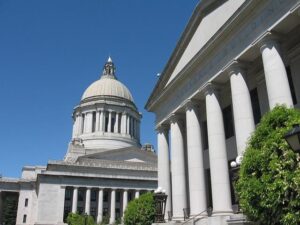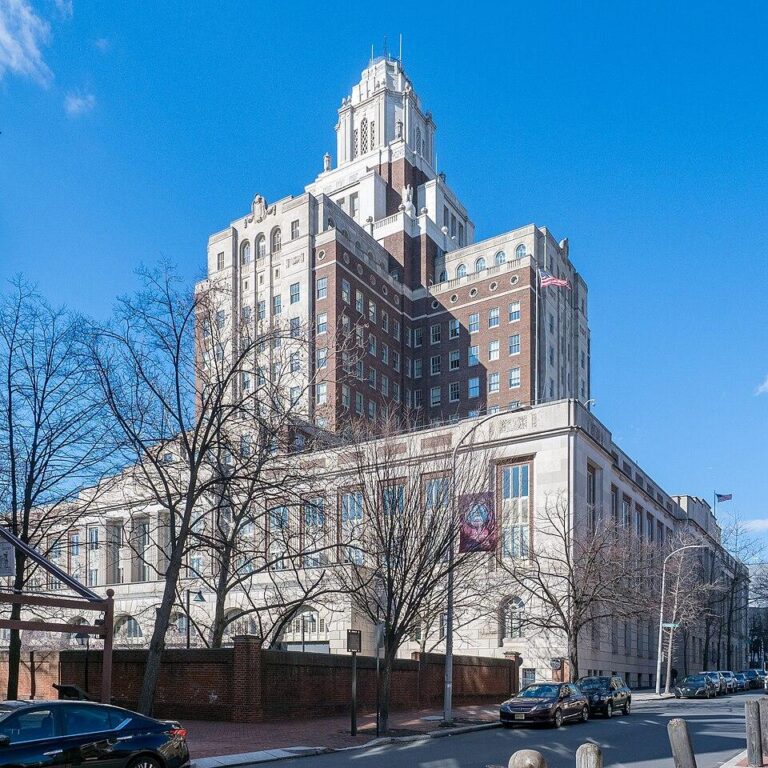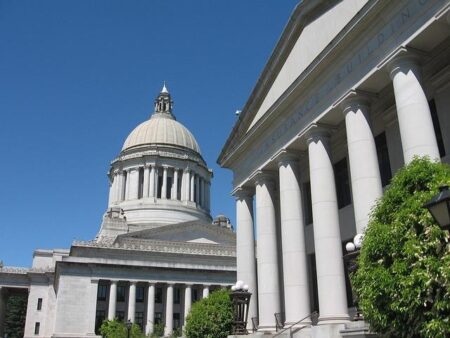Historic Federal Buildings in Philadelphia Set for Divestment
The U.S. government is advancing plans to sell three prominent federal office buildings in Philadelphia, including the architecturally significant U.S. Custom House. This initiative is part of a nationwide strategy to streamline federal property holdings by disposing of surplus assets and enhancing the efficiency of government real estate management. The U.S. Custom House, renowned for its historical and cultural importance, stands as a centerpiece in this effort, signaling a potential transformation in the federal government’s footprint within Philadelphia’s urban core.
Buildings slated for sale include:
- U.S. Custom House – a historic gem with prime downtown positioning
- Federal Building at 601 Market Street – a mid-20th-century office complex
- 833 Chestnut Street – a bustling federal office location with heavy commuter flow
| Building | Approximate Area (sq. ft.) | Current Function | Occupying Federal Agency |
|---|---|---|---|
| U.S. Custom House | 210,000 | Customs operations and administrative offices | U.S. Customs and Border Protection |
| 601 Market Street | 350,000 | Federal office spaces | Various agencies |
| 833 Chestnut Street | 275,000 | Administrative and office services | Multiple federal departments |
Impact on Philadelphia’s Commercial Real Estate Landscape
The impending sale of these federal properties, particularly the U.S. Custom House, is expected to trigger notable changes in Philadelphia’s commercial real estate sector. With the city currently navigating a nuanced equilibrium between office space availability and tenant demand, these transactions present lucrative prospects for private investors and developers. The transition from public to private ownership could accelerate redevelopment initiatives that harmonize historic preservation with contemporary office design and amenities.
For tenants, this shift may introduce new leasing models and property management styles, potentially affecting rental pricing and occupancy rates across the downtown office market. Key anticipated outcomes include:
- Heightened Market Competition: Private ownership often brings enhanced building upgrades and marketing strategies, attracting tenants from older or less adaptable office environments.
- Emergence of Mixed-Use Developments: Redevelopment plans may incorporate retail, dining, and community spaces alongside office functions, fostering vibrant urban hubs.
- Improved Accessibility and Infrastructure: Investments in transit connectivity and parking facilities could increase the appeal and functionality of these properties.
| Aspect | Expected Effect | Projected Timeline |
|---|---|---|
| Ownership Transition | Transfer to private sector stewardship | 6 to 12 months |
| Facility Modernization | Upgraded technology and amenities | 1 to 3 years |
| Tenant Composition | Attraction of new industries and startups | Ongoing post-sale |
Investment Prospects and Prospective Buyers for Federal Office Properties
The sale of federal office buildings such as the U.S. Custom House is drawing interest from a broad spectrum of buyers, including local real estate developers, institutional investors, and specialized real estate investment trusts (REITs). These entities are attracted by the buildings’ strategic locations and the potential for adaptive reuse, which could transform these spaces into mixed-use developments combining office, residential, and retail components. This trend aligns with Philadelphia’s ongoing urban revitalization efforts, which emphasize sustainable growth and historic preservation.
Investors are evaluating these properties not only for their immediate market value but also for their long-term growth potential, influenced by factors such as:
- Prime Urban Location: Proximity to public transit, cultural amenities, and business districts enhances desirability.
- Architectural and Historical Merit: Eligibility for historic preservation tax incentives can improve project feasibility.
- Redevelopment Flexibility: Opportunities to reconfigure spaces to meet evolving tenant needs, including tech firms and creative industries.
| Investor Category | Primary Objective | Key Advantage |
|---|---|---|
| REITs | Stable rental income streams | Consistent cash flow generation |
| Private Equity Firms | Asset repositioning and value enhancement | Potential for high returns |
| Local Developers | Urban renewal and community engagement | Access to tax credits and incentives |
Strategic Guidance for Stakeholders Amid Property Transition
To ensure a seamless transition and maximize the potential of these historic federal buildings, collaboration among federal agencies, municipal authorities, and private investors is essential. Transparent communication and joint planning can foster redevelopment projects that honor the cultural heritage of landmarks like the U.S. Custom House while meeting contemporary commercial demands. Comprehensive market research and feasibility assessments will be critical in identifying optimal uses that balance economic viability with preservation goals.
Recommended approaches include:
- Forming public-private partnerships to combine resources and expertise effectively
- Applying adaptive reuse strategies to preserve architectural character while modernizing facilities
- Engaging local communities early to align redevelopment with neighborhood priorities
- Leveraging federal and state historic tax credits to incentivize investment and rehabilitation
| Stakeholder | Focus Area | Anticipated Benefit |
|---|---|---|
| Federal Agencies | Strategic asset divestment planning | Optimized allocation of government resources |
| Local Government | Streamlining zoning and permitting processes | Stimulated urban revitalization |
| Investors | Investment in adaptive reuse projects | Long-term financial returns and community impact |
Final Thoughts on Federal Property Sales in Philadelphia
The U.S. government’s ongoing evaluation and divestiture of underutilized federal office buildings, including the historically significant U.S. Custom House, represent a strategic shift toward more efficient real estate management. Given Philadelphia’s dynamic real estate market and the landmark status of these properties, the outcomes of these sales will be closely watched by public officials, investors, and community stakeholders alike. The transformation of these federal assets holds the promise of reshaping the city’s commercial real estate environment while preserving its rich architectural heritage.








